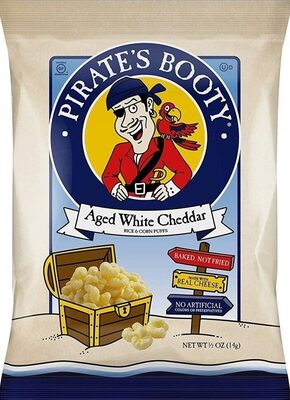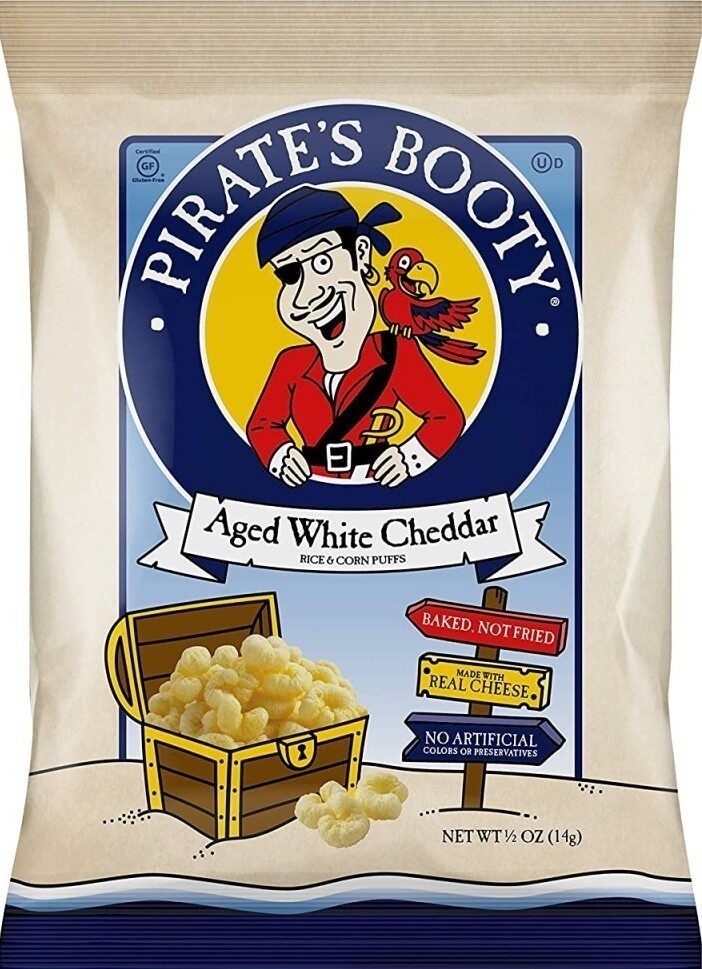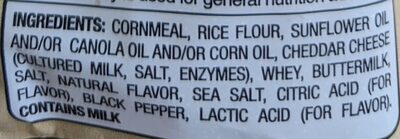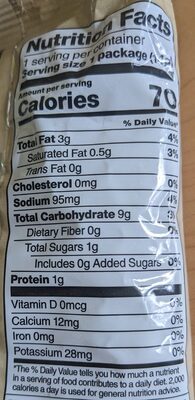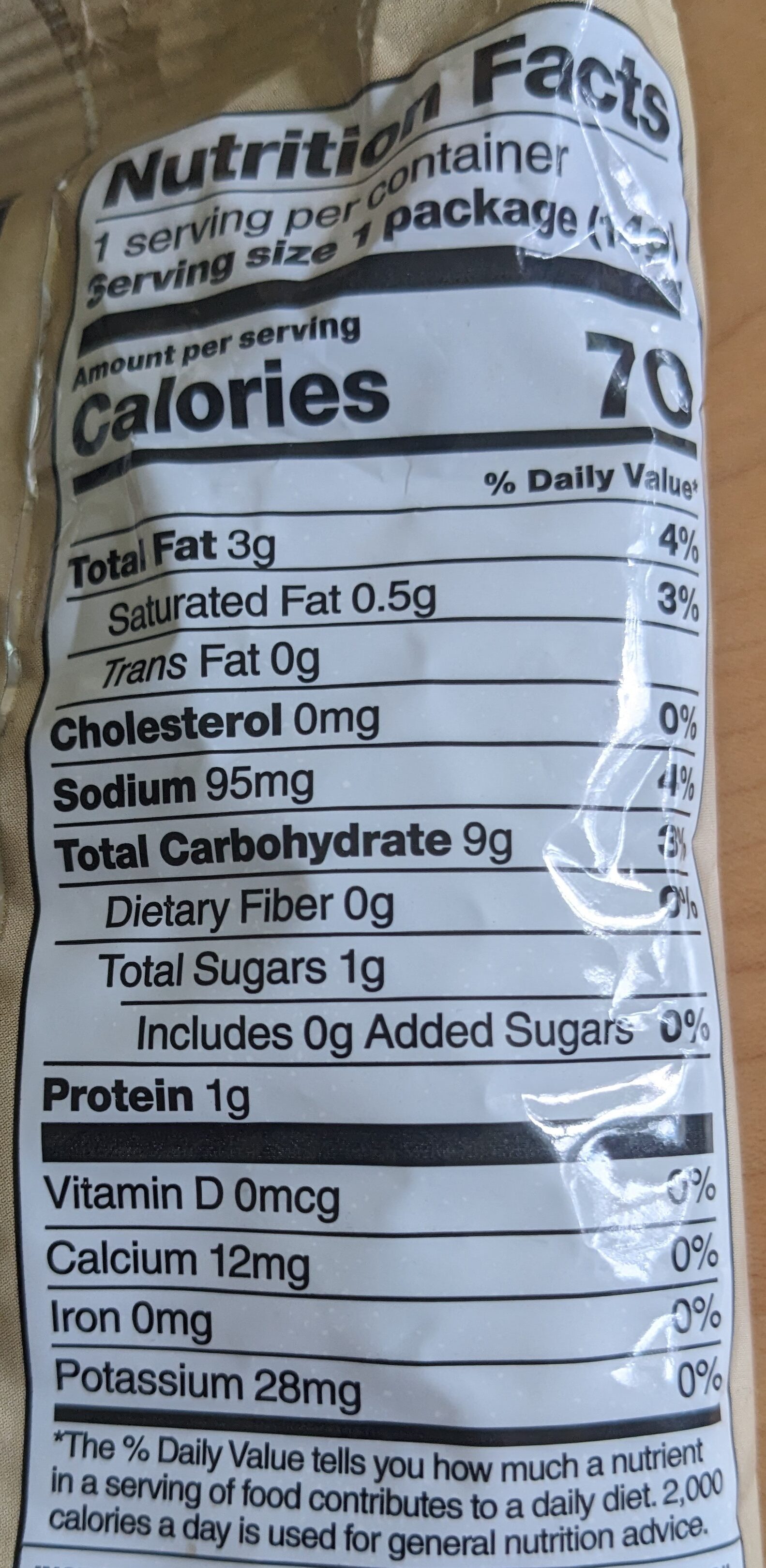Aged White Cheddar Rice & Corn Puffs - Pirate's Booty - 14 g
This product page is not complete. You can help to complete it by editing it and adding more data from the photos we have, or by taking more photos using the app for Android or iPhone/iPad. Thank you!
×
Barcode: 0015665601127 (EAN / EAN-13) 015665601127 (UPC / UPC-A)
Quantity: 14 g
Brands: Pirate's Booty
Categories: Dairies, Fermented foods, Fermented milk products, Snacks, Cheeses, Salty snacks, Appetizers, Chips and fries, Crisps, Puffs
Labels, certifications, awards: No gluten, No artificial preservatives, No artificial colors, No artificial colours and preservatives
Manufacturing or processing places: Texas, USA
Link to the product page on the official site of the producer: https://piratebrands.com/
Countries where sold: United States
Matching with your preferences
Environment
Carbon footprint
Packaging
Transportation
Report a problem
Data sources
Product added on by stephane
Last edit of product page on by .
Product page also edited by inf, isabelamillett, isshan, kiliweb, leonidlednev, openfoodfacts-contributors, packbot, swipe-studio, tacite, tmbe7, yuka.UnF3bUtxay9uL1pTa2MwVTd3L1grWWgzMWJpblczT05KYzB0SVE9PQ, yuka.sY2b0xO6T85zoF3NwEKvlhAfcvXOhjnNDhz6wxKSyvm-HLzWZc1S_ZClFqs, yuka.sY2b0xO6T85zoF3NwEKvlhR5T-XyvCnHMgDnlGCL_-eRJIzCSMwiuNGmNas, yuka.sY2b0xO6T85zoF3NwEKvll4YS4fwkgqcEjzjnmCP1MqKfrDjRshuvZneLag.
